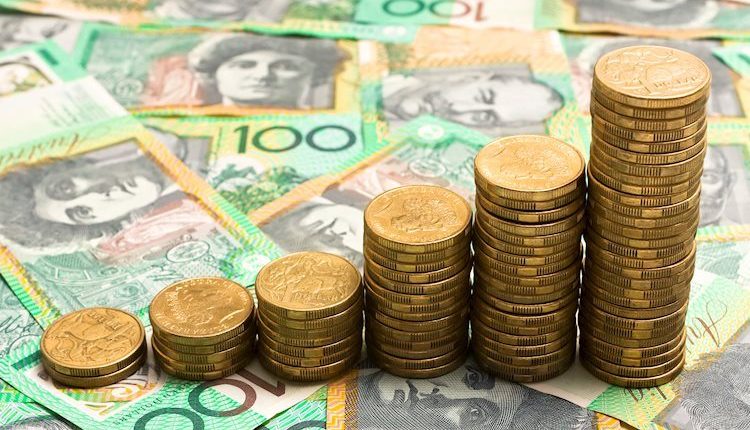- Aussie dropped 0.27% to 0.6495 in Friday’s trading.
- Mixed Judo Bank PMI data impacted the AUD, with strong manufacturing but weak service sector activity.
- S&P PMI data from the US came in strong.
The AUD/USD declined just below 0.6500 as the market is focused on the US Dollar’s strength. The US Dollar Index (DXY) index hit a two-year high above 108.00.
The AUD/USD pair exhibits a mixed outlook, influenced by the interplay of hawkish Reserve Bank of Australia (RBA) and mixed local economic data. However, the potential for future RBA rate hikes may limit the downside, though the overall trend remains bearish.
Daily digest market movers: Australian Dollar pares gains against US Ddollar as solid S&P PMI data lifts the Greenback
- The preliminary reading of Australia’s Judo Bank Manufacturing PMI rose by 2.1% to 49.4 in November. The Services PMI declined by 1.4% to 49.6, while the Composite PMI fell by 0.8% to 49.4.
- In the United States, the Composite PMI rose by 1.2% to 55.3 in November. The Manufacturing PMI improved by 0.3% to 48.8, while the Services PMI rose by 2% to 57 in November.
- Business confidence in the US hit a two-and-a-half-year high in November, according to S&P Global.
- This week, the USD pared back losses as traders reduced bets of a December rate cut by the Fed after hawkish comments from Fed Chairman Jerome Powell.
- On the Aussie’s side, the RBA might bail the pair out as the bank is allegedly considering rate hikes.
AUD/USD technical outlook: Outlook remains bearish as indicators stay negative, and the pair struggles to recover
The AUD/USD pair struggles to recover, capped by negative technical indicators and the 20-day Simple Moving Average (SMA). The Relative Strength Index (RSI) remains deeply embedded in the bearish territory below 30, indicating persistent selling pressure. Similarly, the Moving Average Convergence Divergence (MACD) indicator prints red bars. These bearish signals suggest that the pair may continue to face difficulties sustaining any significant recovery in the near term.
RBA FAQs
The Reserve Bank of Australia (RBA) sets interest rates and manages monetary policy for Australia. Decisions are made by a board of governors at 11 meetings a year and ad hoc emergency meetings as required. The RBA’s primary mandate is to maintain price stability, which means an inflation rate of 2-3%, but also “..to contribute to the stability of the currency, full employment, and the economic prosperity and welfare of the Australian people.” Its main tool for achieving this is by raising or lowering interest rates. Relatively high interest rates will strengthen the Australian Dollar (AUD) and vice versa. Other RBA tools include quantitative easing and tightening.
While inflation had always traditionally been thought of as a negative factor for currencies since it lowers the value of money in general, the opposite has actually been the case in modern times with the relaxation of cross-border capital controls. Moderately higher inflation now tends to lead central banks to put up their interest rates, which in turn has the effect of attracting more capital inflows from global investors seeking a lucrative place to keep their money. This increases demand for the local currency, which in the case of Australia is the Aussie Dollar.
Macroeconomic data gauges the health of an economy and can have an impact on the value of its currency. Investors prefer to invest their capital in economies that are safe and growing rather than precarious and shrinking. Greater capital inflows increase the aggregate demand and value of the domestic currency. Classic indicators, such as GDP, Manufacturing and Services PMIs, employment, and consumer sentiment surveys can influence AUD. A strong economy may encourage the Reserve Bank of Australia to put up interest rates, also supporting AUD.
Quantitative Easing (QE) is a tool used in extreme situations when lowering interest rates is not enough to restore the flow of credit in the economy. QE is the process by which the Reserve Bank of Australia (RBA) prints Australian Dollars (AUD) for the purpose of buying assets – usually government or corporate bonds – from financial institutions, thereby providing them with much-needed liquidity. QE usually results in a weaker AUD.
Quantitative tightening (QT) is the reverse of QE. It is undertaken after QE when an economic recovery is underway and inflation starts rising. Whilst in QE the Reserve Bank of Australia (RBA) purchases government and corporate bonds from financial institutions to provide them with liquidity, in QT the RBA stops buying more assets, and stops reinvesting the principal maturing on the bonds it already holds. It would be positive (or bullish) for the Australian Dollar.
Read the full article here

